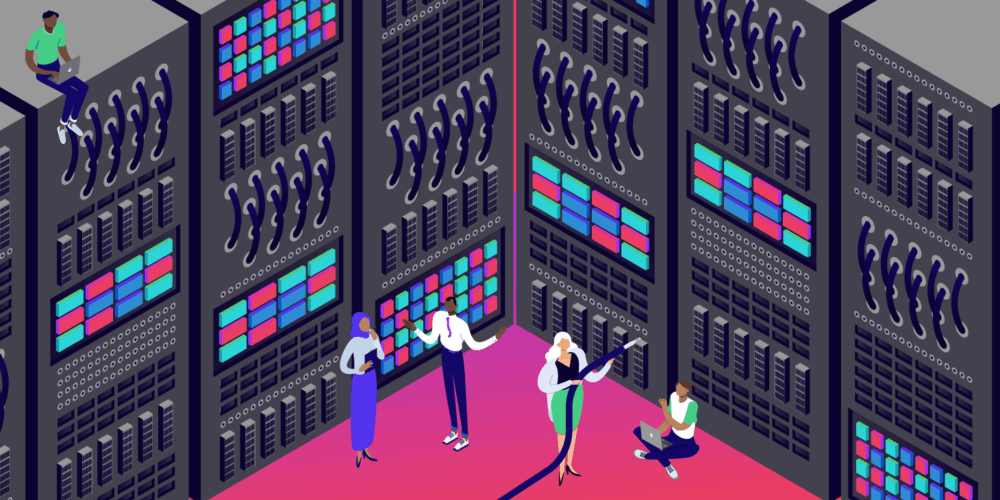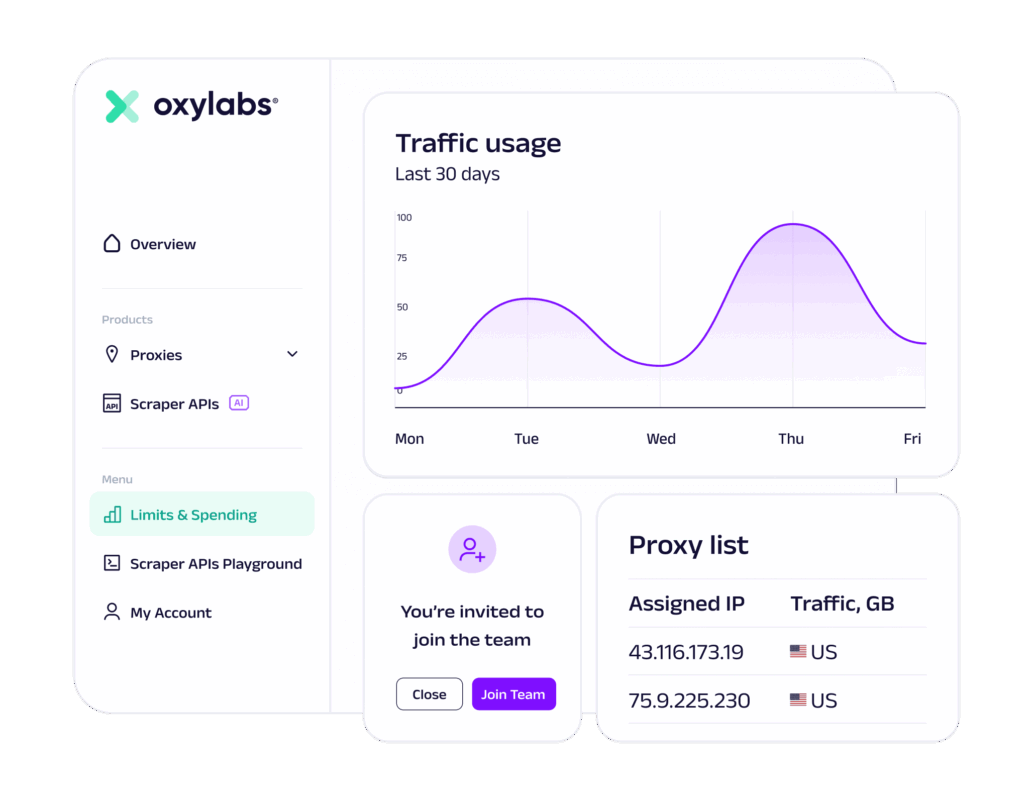TL;DR – Is Squarespace Better Than Shopify For Creators & Influencers?
If you are a creator or influencer and your project is built around content, digital products, or simple selling, here’s why Squarespace is most likely a better fit for you than Shopify:
- Digital products, memberships, and downloads: Squarespace is the easier, cheaper, faster play.
- Design and setup: Squarespace gets you a polished site in hours with no extra spending on themes.
- Content management: Squarespace’s editor is nicer to write in and way more flexible for pages and posts.
- Built-in marketing: Email, scheduling, members, and basic automations are included and work out of the box.
- Cost predictability: Fewer paid add-ons. Your bill stays close to the plan price.
I have built with Squarespace and Shopify, and I like both platforms. But as with most things in life, the right one for you (if you’re a creator / influencer) all comes down to context.
Both are e-commerce platforms, of course, but Shopify is a much larger, more complex beast.
It has more capabilities and features and, of course, cost.
If you want to do full-scale e-commerce with physical products, Shopify is the platform for you.
For smaller projects and digital products, though? That’s where Squarespace comes into its own.
Let’s unpack some more reasons why going with Squarespace over a full-stack e-commerce tool like Shopify or WooCommerce is a smart move for content creators and influencers…
6 Reasons Influencers & Creators Should Opt For Squarespace Instead of Shopify or WooCommerce
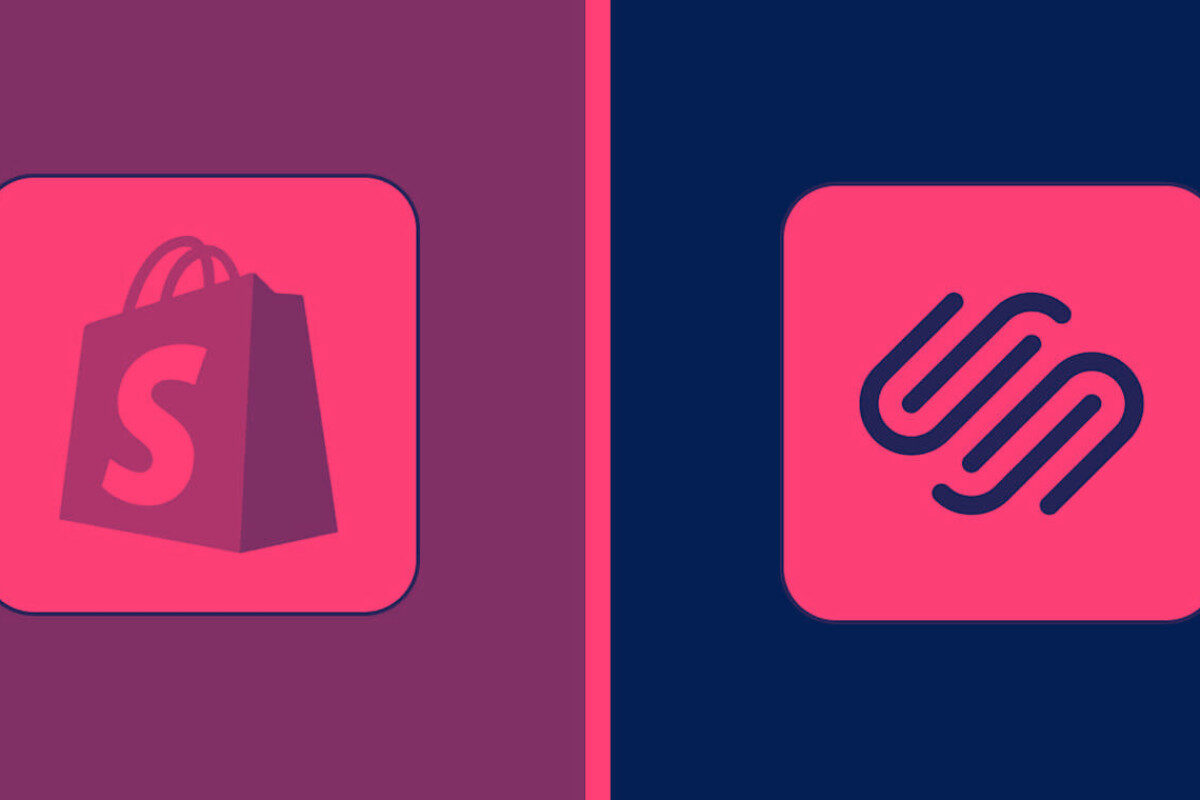
1) It’s Better For Digital Products and Memberships
Most creators and influencers use social media (TikTok, X, Facebook, YouTube) to develop and grow their audiences.
If that’s the way you do things, no problem. But you need a home away from home. One that isn’t preferably owned by a Big Tech company that’ll happily snatch your audience away from you in the blink of an algorithm update.

The quickest and easiest way to do this is to not use WordPress. I love WordPress, I use it for this site and multiple other projects.
But it has a learning curve, and WooCommerce is a pain in the ass to implement at the best of times.
And I’m guessing most of you don’t want to spend the next several months learning how to build professional-looking WordPress sites?
Real-Life Example
- What I did: I spun up a paid resource library for a coaching client using Member Areas and Email Campaigns. No third-party tools. No API wrangling.
- Why it is better: Checkout, access control, and email nurturing all live in one dashboard. On Shopify you can do this too, but it usually involves extra apps, more setup, and higher monthly costs.
Simple is always better when it comes to tech platforms, especially if you’re newbies.
If the type of thing you plan on selling is courses, guides, templates, presets, coaching, and/or paid communities, Squarespace is just simpler.
It gives you everything you need right out of the box, including analytics and payment gateways, and designing and building pages is a cinch.
2) A Professional-Looking Site With Squarespace Costs Less Than It Does With Shopify
Squarespace includes 200+ designer templates in your plan.
They look great out of the box and are easy to tweak which means you can quickly build-out your landing pages, blog templates, static pages, and offer pages.
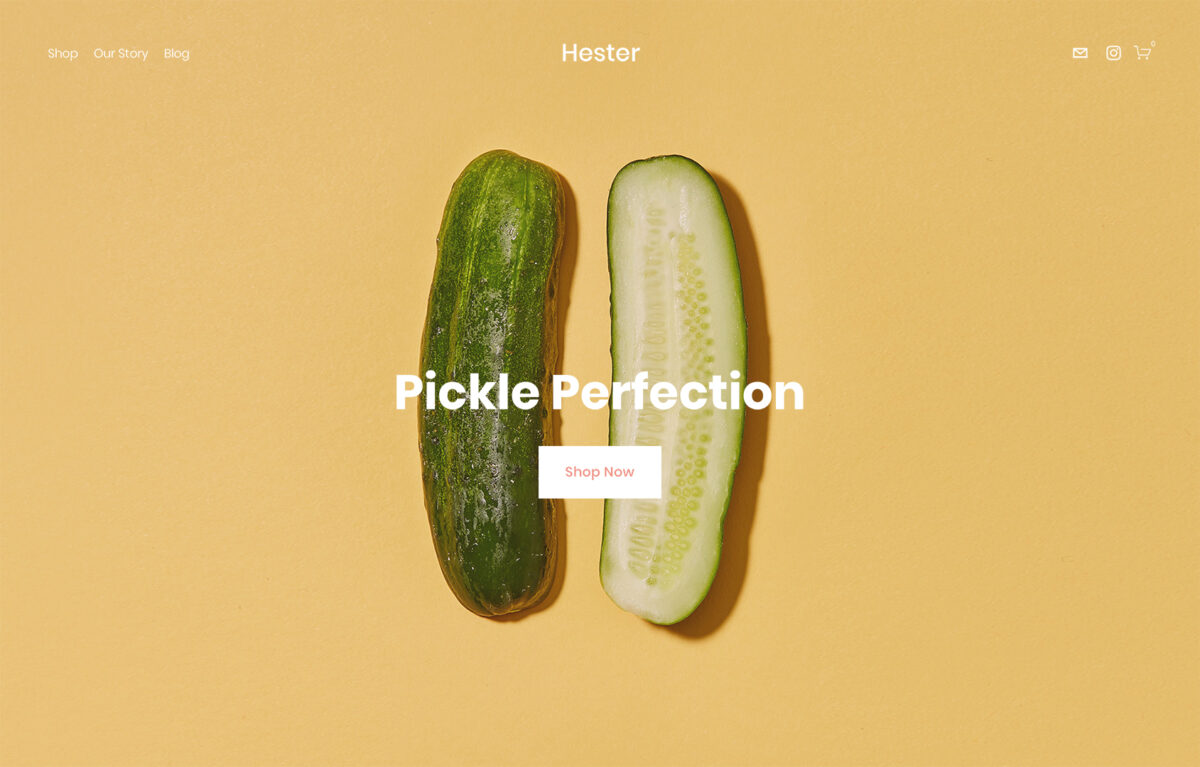
Shopify has themes and templates, of course, but the good ones are hidden behind a paywall.

This means it costs more to get a professional-looking site on Shopify than it does with Squarespace.
- What I noticed: With Squarespace I can get a brand-ready homepage, product page, and blog layout in an afternoon. With Shopify I either have to spend hours on custom code or cough-up for a premium theme to get the same visual finish.
- Why it is better: Squarespace templates are built for portfolios, blogs, and landing pages, not just product grids. Your site looks like a proper, modern website, not a catalog.
If visuals and aesthetics are important to you (and they should be), Squarespace gives you a lot more for quite a lot less.
3) It’s Way More Beginner-Friendly Than Shopify
Both platforms are no-code, but Squarespace is a much more approachable platform, especially for absolute beginners and newbies.
From design to general settings, everything has been designed to be as intuitive as possible.
It’s a bit like iOS, you take one look at it and you just kind of know how to use it.
- The editor uses true drag and drop with responsive sections.
- Pages, posts, galleries, forms, and paywalls are in one clean workflow.
Shopify is more involved. It has more features and is obviously more geared towards physical products; this is the company’s bread and butter, after all.
You also need to install and configure a whole host of applications to unlock some of the basic marketing functionality (landing pages, email marketing, good analytics) you get for free with Squarespace.
And because it’s 2025, there’s even a built-in AI assistant.
It’s called Blueprint AI and you can use it to quickly build out pages and sections of your project simply by answering a few questions.
4) Squarespace’s Content Editor & Design Tools Are Better Than Shopify’s
This is the big one.
Writing and designing content in Squarespace feels good.
I hate doing content marketing work in Shopify; the content editor is terrible.
Doing anything even remotely complicated in it is nigh-on impossible.
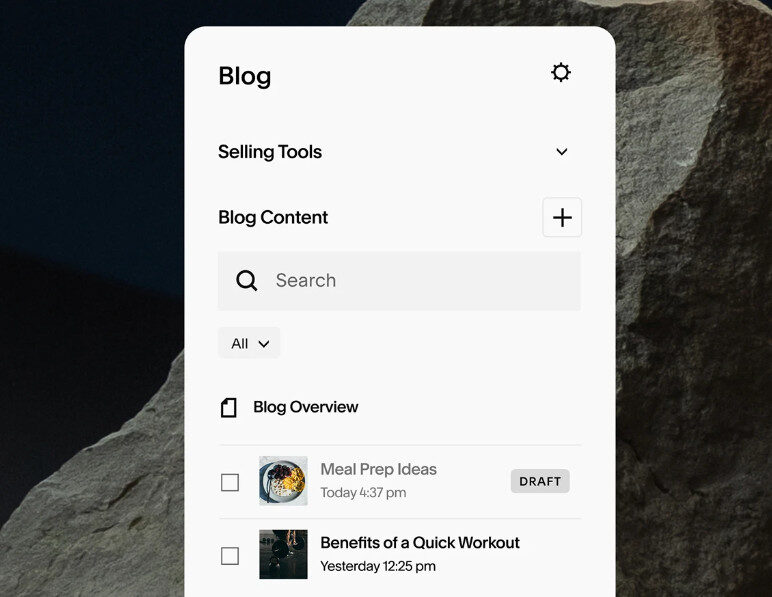
I dislike it so much that on a project last year, I opted to manage all the content and blog posts from AirTable and ping them over via an API.
Squarespace’s content editor is the exact opposite; I actually enjoy writing and creating content inside it.
- Create unique layouts per page or post. Mix text, video, galleries, and CTAs wherever you want.
- Style controls are granular without being confusing. Backgrounds, overlays, and animations are a click away.
- Blogs, portfolios, podcasts, and gated articles are native. No plugin hunt.
If writing content is a big part of your workflow and project, this is something you’ll appreciate.
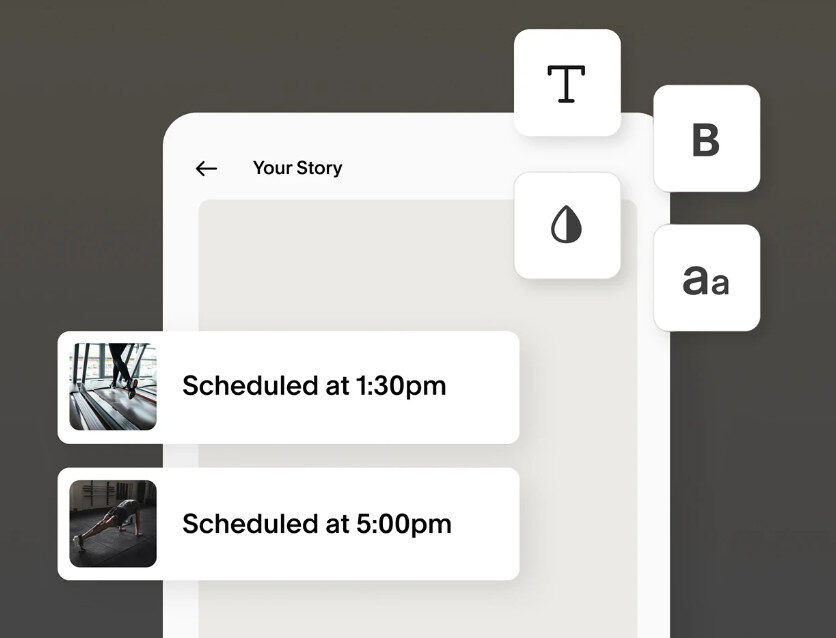
You can also augment and tweak the design and look of any page or post you’re working on with just a few clicks.
In Shopify? You’ll need to hack the theme or use custom code to do this. Not fun.
My take: For content-heavy projects, Squarespace makes the process enjoyable. On Shopify I have to reach for third-party builders or custom tweaks to get comparable layouts.
5) You Get Marketing and Analytics Tools For Free, Right Out The Box
We published a study on the real cost of running a Shopify store recently. The results were bonkers.
Most stores were paying a small fortune for tools and apps.
I like to keep things lean, especially on small, less complex projects. And selling memberships, courses, and downloads is about as simple as it gets with e-commerce.
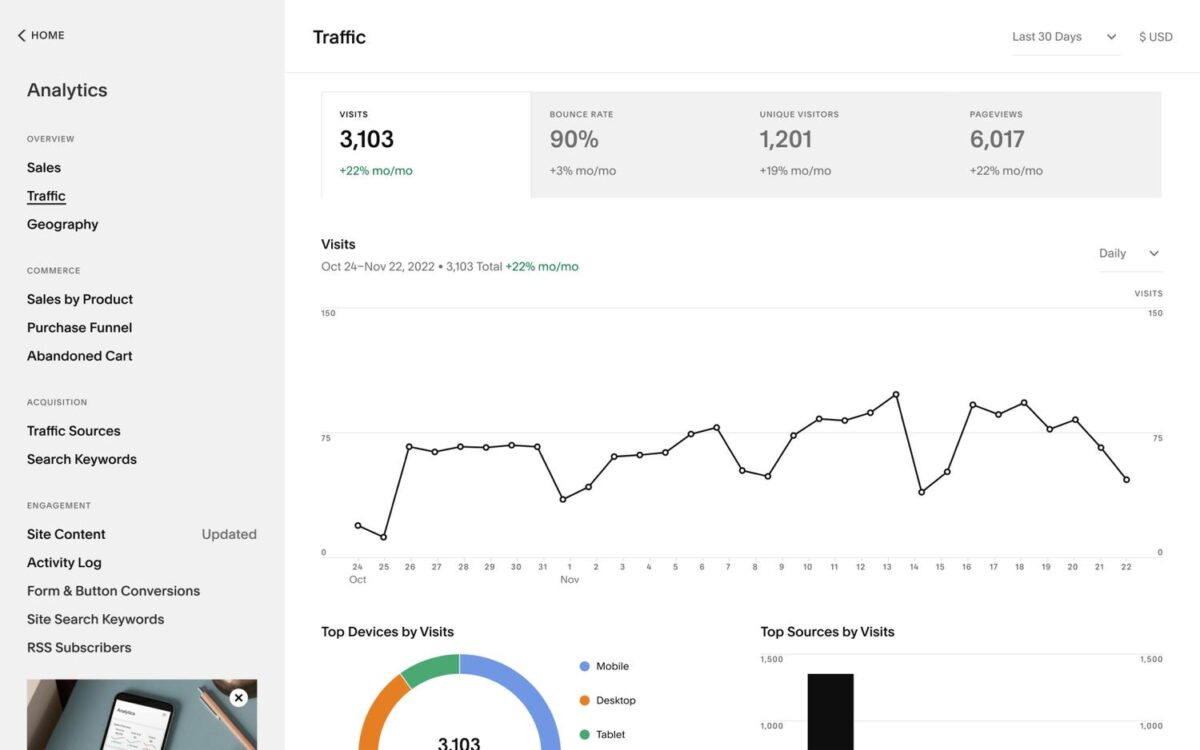
And with Squarespace, you won’t have to pay for any of the tools and apps that you need to do all of the above. Here’s what you get out of the box:
- Email Campaigns for newsletters and simple automations
- Scheduling for bookings and sessions
- Member Areas for subscriptions and paid content
- Forms and basic analytics, all tied to your site
Example: I launched a simple funnel for a course creator with a landing page, a checkout, and a 3-email welcome series. It was all native. No juggling six tools and five invoices.
If you need enterprise-level segmentation, SMS at scale, or complex affiliate stacks, Shopify’s app ecosystem is stronger.
But t for most creator businesses, Squarespace’s built-ins are more than enough to get from $10k to even $100k or more a month.
6) Lower Running Costs Than Shopify (By A Considerable Margin)
Squarespace keeps your bill close to the sticker price. You’ll pay pretty much what is advertised, and that’s a significant point in and of itself.
Name me a product or service that actually cost its sticker price? I’ll wait…
And what you get for the subscription fee is bloody good value. It gives you all the tools and features you need to scale up to big monthly numbers.
The best part, though, is that it is fully-functional right out of the box:
- Templates are included.
- Core features (newsletter, memberships, analytics, landing pages) are included.
- And this means you need fewer plugins which means lower monthly costs
On Shopify, I regularly see stores spend more than $3500 a month on tools and apps. Most would argue they need it, and in some instances they do.
But these kinds of costs are unnecessary overhead if you are selling digital products and services.
Quick Checklist: Choose Squarespace If You Want

- A content-first site with beautiful pages and posts
- To sell digital downloads, courses, or memberships without extra tools
- A clean editor that makes page building feel like design, not dev work
- Lower, more predictable costs with fewer add-ons
- To launch fast without shopping for premium themes
Choose Shopify instead if you are building a physical product brand and you care about inventory, advanced shipping, POS, and large-scale automations.
Real Examples From My Builds
- Squarespace membership site: Paywalled articles, video library, and a monthly plan. Launch to live in 48 hours. Support requests dropped because everything lived in one place.
- Squarespace creator portfolio: Print sales plus digital presets. Stunning gallery pages, simple checkout, zero app bloat.
- Shopify merch store: TikTok and Instagram Shopping, abandoned cart flows, loyalty, and affiliate tracking. Massive flexibility, higher app spend, perfect for scaling physical goods.
Different tools, different strengths. If your business is content and digital products or you want to create a membership site, Squarespace is all you’re going to need to achieve your goals.
Bottom Line
Here are all the areas where Squarespace is better than Shopify if your project is focused on content, downloadable content, memberships, and course-based digital products:
- Content looks better with less work.
- Digital products and memberships are easier to ship.
- Core marketing is already built in.
- Costs stay predictable.
If you are a creator focused on publishing, teaching, coaching, or selling downloads, Squarespace is the move.



